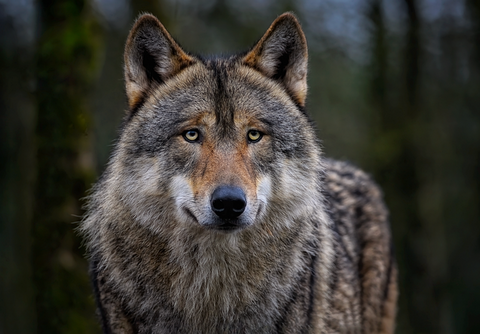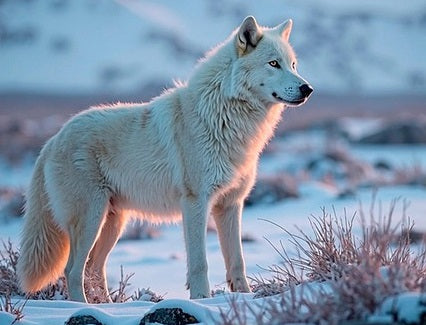
The Indian Wolf: A Revered Animal
of reading - words
The Indian wolf ( Canis indica ) belongs to the subspecies of the gray wolf . The population of this canid is distributed mainly in several countries, such as India, Turkey, southern Israel, Saudi Arabia, and Iran.
The Indian wolf was long classified as a subspecies of the Iranian wolf (Canis lupus pallipes). However, recent studies have classified it as a subspecies of the Indian wolf (Canis lupus indica). Read this article to get an idea of the profile of this wild animal.
Overview of the Indian Wolf

A) Anatomy
The morphology of the Indian wolf is reminiscent of the size of the North American red wolf . Furthermore, its short, reddish or light brown fur gives the impression of being a fox. It is a small wolf (between 60 and 95 cm) and weighs between 18 and 25 kg.
B) The distribution of wolves in India

Indian wolves are found scattered across the bushlands and grasslands of India. They are found in the following states: Maharashtra, Gujarat, Rajasthan, Andhra Pradesh, Uttar Pradesh, Madhya Pradesh, etc.
Individuals living in the south are smaller than those living in the north. Wolves found in the north, particularly in the steppe region (a region with a semi-arid and desert climate), are characterized by their large size and dark fur. Therefore, the fur of Indian wolves is less dense than that of their counterparts living in countries with cold climates, such as Canada and America.
Some territories ruled by Indian wolves intersect with those occupied by Himalayan or Mongolian wolves ( Canis lupus chanco ). However, there has been no mating between the two breeds.
C) The behavior of the Indian wolf
This wild animal rarely howls , which complicates the mission of experts to study its distribution in Indian territory. On the other hand, the cohesion of the pack members is very weak during the hunt. Indeed, each of them hunts for its own needs. This ritual usually begins at night and ends at dusk.
D) The diet of the Indian wolf

This animal's diet is based on small animals, such as raccoons, rodents, rabbits, and hares. Human devastation of wildlife forces this wolf to prey on livestock, leading ranchers to kill it to protect their cattle.
E) Reproduction of the Indian wolf
The breeding season generally begins in October. Mating between the alpha male and female results in three or five wolf cubs, between December and January. The alpha pair raises their pups in a den, such as a cave or cavity, until they become more mature at six months of age. The wolves in the pack help care for the pups. For example, when the alpha wolf goes hunting, other wolves take over caring for them.
The Indian Wolf: A Sacred Totem Animal

The Indian wolf has been the totem animal so revered by the Indians since the dawn of time. It symbolizes independence of mind, loyalty, courage, dignity and freedom. This powerful predator represents the omen of victory, thanks to its strength and intelligence. This is why it is chosen as the model of the most ardent hunter among the Indian people , whose profile it adopts to successfully hunt game. This master hunter fascinates the Indians because he leads a lifestyle similar to their own. Indeed, the Indian clans live from hunting, gathering and fishing.
The wolf occupies a very noble position among the Native Americans, who take it as an example, swear respect for it, and consider it their counterpart. For example, the alliance between the Pawnee Indians and the wolf is very strong. Thus, the words "wolf" and "man" mean the same thing to them, and the acronym "Pawnee" stems from this fusion.
From a social perspective, the highly organized social hierarchy within a pack inspires Native American peoples. They value the coordination between members of the pride and the social ladder that regulates its life. The pack is led by the Alpha pair: the most dominant wolves. These animals maintain reproductive rights and make all decisions regarding the herd's survival, such as movement and hunting.
The wolf represents a strong sign of protection among the Indians who are attracted by the way of raising the young wolf cubs and by the dedication of this animal to defend its pack and deter the dangers that may attack it.

🐺 Conclusion 🐺
For a long time, the Indians have shown deep reverence for the wolf, as they share the same values and lifestyle. This totem animal reflects the incarnation of the spirit in this people and symbolizes strong instincts, independence, and freedom.
However, the Indian wolf species has been listed as endangered since 1972 due to human predation, which preys on humans and livestock, in addition to other threats to its habitat and food security. These threats are primarily due to industrial development and intensive agriculture.




